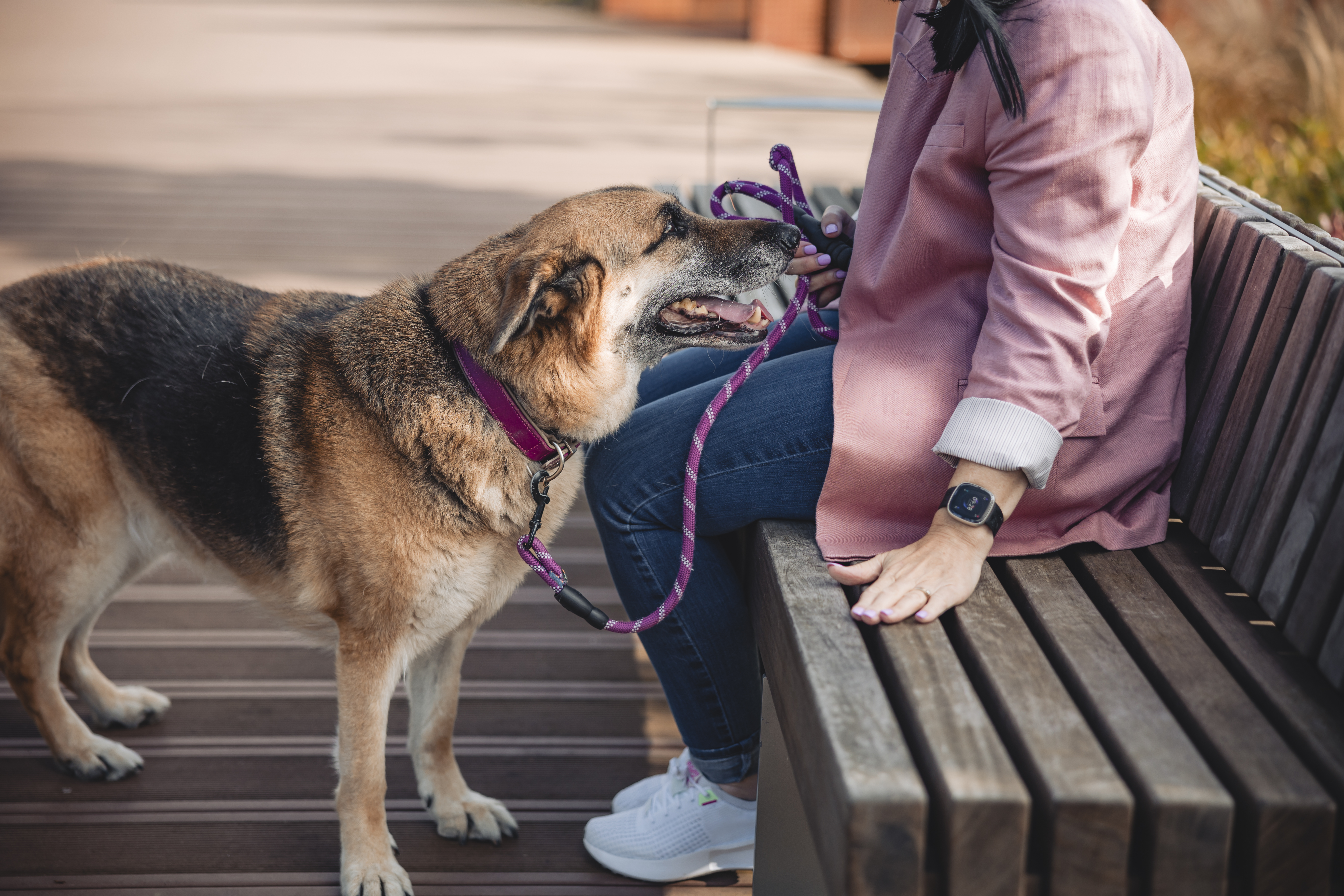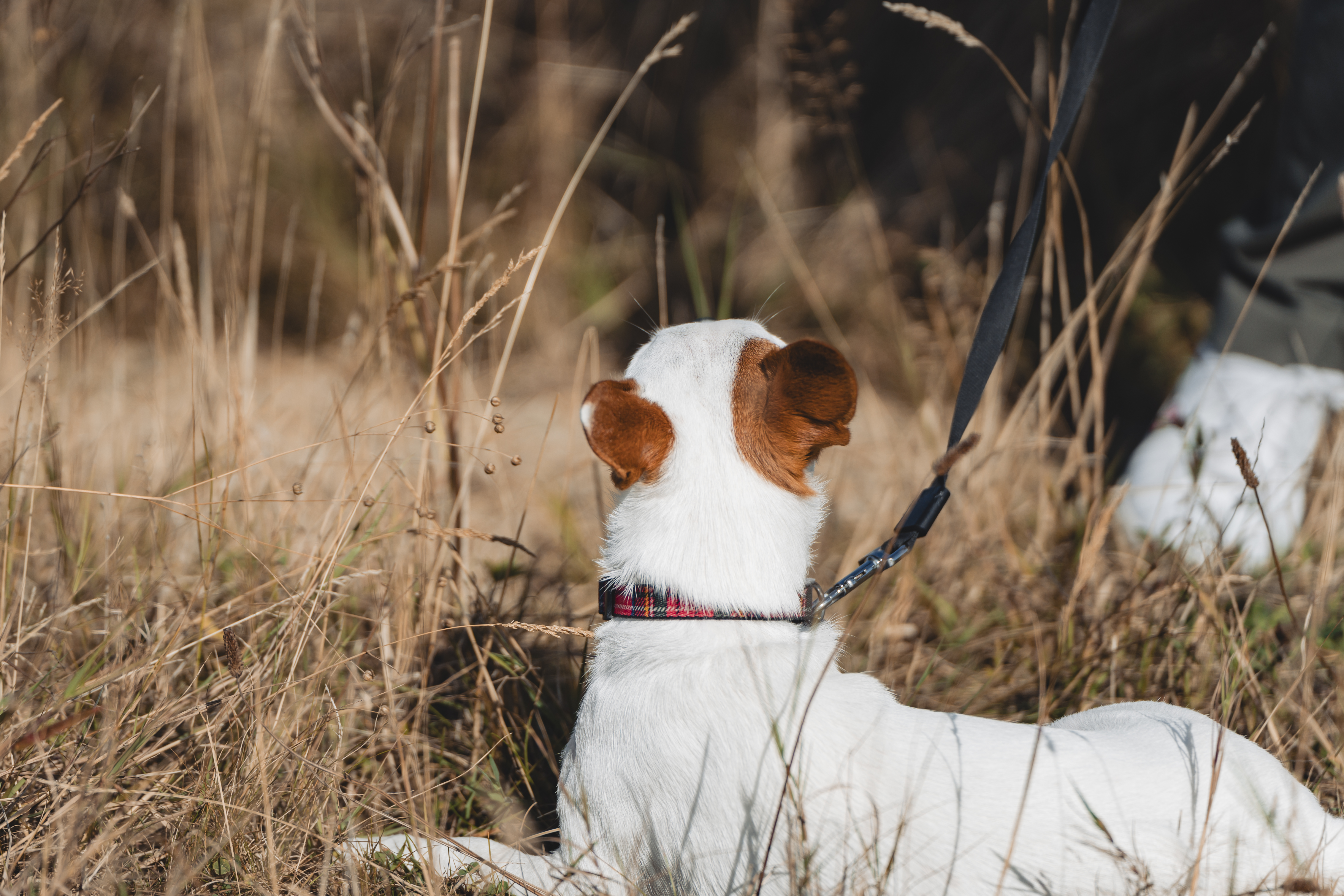Does your dog’s skin flare up at certain times of the year but not others? The warm weather brings longer days, more outdoor play, exciting walks and… itchy dogs. But why is this?

Skin allergies are a common problem for many dogs with signs often becoming more noticeable or severe in warmer weather. This is likely a function of increased humidity and the propensity of allergic dogs to develop skin infections, and also the increase in environmental allergens (e.g. pollen) in spring/summer months. We understand this is a frustrating issue for many pet owners so we’re going to take a close look at seasonal skin problems in dogs. We will delve into how the weather affects your dog’s skin allergies as well as how you can help them at this tricky time.
What are seasonal skin issues in dogs?
Skin allergies are diagnosed frequently in dogs, with reactions to environmental allergens being very common.
Examples of environmental allergens include:
- Grass pollens
- Tree pollens
- Weed pollens
- House dust mites
- Storage mites
- Moulds and yeasts
- Fleas (an allergy to their saliva)
The levels of these allergens in the environment can vary with the seasons, depending on when plants are releasing their pollen. During the spring and summer months, there is much more pollen about than there is during winter. So just like we see in human hay fever, dogs with allergies may not suffer all year round but can experience flare ups at specific times.
How does the weather affect your dog’s skin?
Plants may pollinate at different times, but usually somewhere between spring and autumn. This coincides with the warmer weather. More allergens in the environment can increase the risk of a flare-up of itchy skin in susceptible dogs. Plus, we generally spend longer outdoors at this time of year - walking, playing, and relaxing in the garden.
Warm weather can also see an increase in parasites like fleas, which can trigger itchy skin in dogs.
Warm, humid conditions also make the perfect breeding ground for secondary infections in already irritated skin.
Signs of seasonal skin allergies
Signs of seasonal skin allergies can vary between different dogs. Your dog may show some or all of the following signs:
- Excessive scratching
- Licking at their paws
- Saliva staining of the fur from licking and nibbling (a pinky-brown colour)
- Ear infections
- Hair loss
- An increased odour from the skin or ears
- Red inflamed skin
- Crusts, scabs or sores on the skin or around the ears
- Increased pigmentation of the skin
- Thickening of the skin
- Watery eyes
- Excessive sneezing
- Increase in clear nasal discharge

What should I do if my dog has seasonal allergies?
If your dog is showing signs of skin allergies, then you should contact your vet. Skin allergies can be very uncomfortable for your dog and, if left untreated, can lead to secondary bacterial or yeast infections. Delaying treatment or experimenting with home remedies can allow the problem to get worse and become more difficult to treat.
How will the vet diagnose my dog’s skin issues?
Your vet will start by examining your dog and discussing the signs you have noticed. In many cases, vets will diagnose seasonal skin allergies based on these findings after running tests to rule out causes of similar signs. They can also determine if your pet has an insect bite or a parasite problem. Some types of tests the vet might suggest could be:
- Taking samples from the skin and ears to look at under the microscope, checking for parasites, bacteria and yeast.
- Taking swabs from your pet’s ears and skin to send away for culture. This will allow any bacteria to grow, allowing your vet to see what type of infection is present, and if so, then which antibiotics or topicals will treat it best.
In some cases, your vet may decide to trial your dog on medication and assess their response, such as anti-parasite treatments or medication to reduce itchiness and inflammation. These medications can help to get your dog comfortable again, quickly.
What treatment options are available for seasonal skin problems in dogs?
Your vet will try to understand the underlying cause of your dog's itch to identify the most effective treatment plan for you and your dog. Your dog may require more than one treatment.
Your vet will discuss the options with you, but your dog could require one or more of the following treatments to control their condition:
Medication to reduce itch and inflammation
There are a variety of medications that your vet may prescribe to reduce itchiness and inflammation, and help your dog feel comfortable again. By reducing itching and scratching, these medications can also reduce the risk of secondary skin infections with bacteria or yeast.
Parasite prevention
All dogs experiencing skin issues should receive regular parasite prevention, to ensure itchy skin parasites like fleas and mites are under control. A good example is Simparica Trio® which protects against fleas, ticks, mites, heartworm and more, in one tasty monthly chew.
Immunotherapy (desensitisation) therapy
Immunotherapy is an option for owners who have allergy-tested their dogs. Small, controlled doses of environmental allergens are administered to your dog via injection or under your dog's tongue at regular intervals. By giving a small amount of the allergens, they aim to desensitise their immune system (induce tolerance) so the itch is reduced over time. This allows your pet to ‘get used to’ their triggers in a controlled way, meaning they are less likely to flare up when encountering these allergens for real.
Topical treatments
Medicated shampoos, creams or ointments may be required to help treat secondary infections or soothe inflamed skin. Medicated ear drops are usually needed for ear infections.
Dietary changes
Supplementing your dog’s diet with omega-3 fatty acids can be a helpful adjunctive treatment, but rarely controls the allergic itch as a sole therapy. These provide anti-inflammatory properties and can improve the skin’s barrier to allergens. If your dog is also suspected to have food allergies alongside environmental ones, your dog may benefit from a hypoallergenic or novel protein prescription diet.
How to prevent skin irritation in warmer weather
If your dog has been diagnosed with skin allergies, then there are many things you can do to help reduce flare-ups of itchy skin. These include:
- Following your vets’ recommended treatment plan to ensure your dog is kept comfortable. Some pets need year-round allergy medication, whereas others only require it during certain months of the year.
- Rinsing off their paws and tummy after a walk. This helps to remove excess pollen from their skin and coat. Even wiping your pup with a damp cloth can help.
- Avoid walking your dog in areas where more pollen might be present, such as fields with long grass and lots of weeds.
- Keep your home clean. Plenty of vacuuming and dusting can help prevent allergens like pollens and house dust mites from building up. You could also consider an air filter.
- Reducing the number of flowering houseplants that you have in your home and keeping your pet away from the lawn while it is being mowed.
- See your vet if your dog is becoming uncomfortable or showing more signs of allergies. Some dogs can require additional medications during a flare-up.
Seasonal skin problems in dogs are very common, with the levels of environmental allergens rising during warm weather. If your dog has been diagnosed with a seasonal skin allergy, then it is important to follow your vet’s treatment plan. By reducing the frequency and severity of flare-ups, we can manage itchiness and the risk of secondary infections.
We understand that allergies and other skin irritations can be a challenge, but the good news is that there are a variety of effective treatment options available. Your vet will be able to discuss these with you and help your dog to have a happier and more comfortable summer!
If you’re still not sure if your dog’s skin needs attention, our online assessment tool can help you find out if your itchy dog needs to see your vet.
Explore more on these topics
Select a country and language
Regulatory constraints and medical practices vary from location to location. Consequently, the information provided on the site in which you enter may not be suitable for use at your location.
Asia Pacific
Europe















Latin America







North America
You're visiting the ZP
What would you like to do?









